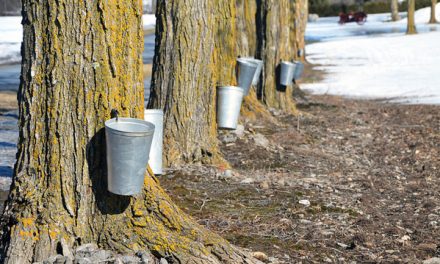By Ashley Knapton
AgriNews Contributor
As we work through winter, many of us are looking ahead to summer and the excitement of another summer of growing feed. Before we get too far into thinking about the 2021 growing season, we should take some time to think about how successful we were in growing, harvesting and storing our feed last year. We can use this quieter winter time to peek into feed storage and check a few things, all for the sake of doing an even better job this coming year.
First thing, and possibly the most important thing, is to look at our feed inventory remaining. Whether it is counting bales or measuring the number of feet remaining in the bag, bunk or silo, confirming the amount of feed we have left on farm will allow us to make ration adjustments sooner rather than later. If tight feed inventories are recognized early, nutritionists might be able to make small changes to help stretch the on-farm feed rather than drastic changes later.
Knowing the amount of feed we have is also an important part of planning ahead. Since winter kill is an ongoing challenge in the Eastern Ontario region, we should be aware of our feed inventories in case we see the worst and lose some or most of our established hay crop. Knowing how tight we are for hay can play into the consideration of any emergency forage decisions we need to make. Instead of picking the alternative forage with the highest quality, we might select something that is fast growing, and ready to harvest earlier.
If we are surprised at how much feed our farm has gone through, there are a few things we should think about before spring time arrives. First, are we growing enough feed to begin with? This means when the harvest was all said and done last fall and the feed was in storage, would we have had enough to get us through to harvest in 2021. If you are unsure of how much feed your herd would need, you can have a conversation with your nutritionist or else keep close track of the amount you use for a week. This can be used as a predictor.
If the answer to “did we make enough feed” is ‘yes’, we need to explore the sources of these on-farm feed losses. Is a reputable inoculant being used to help reduce shrink? Do noticeable amounts of feed need to be tossed because of spoilage? Are the animals wasting a large amount at the feeder? By pinpointing where the greatest losses are occurring, we can work to reduce them and ensure maximum return from our feed making efforts.
If the answer is ‘no’, the challenge is a little harder. In cases of land shortage, it can be hard to quickly increase inventories. Producers can explore opportunities to improve existing yields. Is our soil fertility sufficient for the yields we hope to achieve? Are there rotation adjustments that we can make? Should we consider a different crop to increase our tonnage per acre – for example, increasing the amount of corn silage in the ration instead of hay.
While we are trudging through the snow to get an accurate and up-to-date idea of what our current inventories are, we can also take a good look at how well preserved the feed is to evaluate our success in storing feed for the winter. There are a few things to look for:
-Are there visible mould spots? If so, how can we prevent those next year. Is the moisture correct? Do we need to utilize more plastic?
-Where applicable, evaluate the packing density of the feed. Ensuring sufficient packing density will help to improve fermentation and prevent aerobic spoilage.
-Is the feed processed in a way that works for your ration? For example, is the chop length correct and consistent or are your corn silage kernels processed aggressively enough to ensure animals can utilize all the nutrients in the kernel.
By taking time to collect this information and asking these questions now, we can work to set ourselves up for success in the coming year. Whether it is confirming our inventories to ensure we have enough or critically evaluating our efforts from last year when it comes to preserving feed, we can use these results to help create the best plans for the upcoming year. The decisions we make regarding our feed, last with us for an entire year, so let us gather all the information we can to ensure we’re making the best ones.












